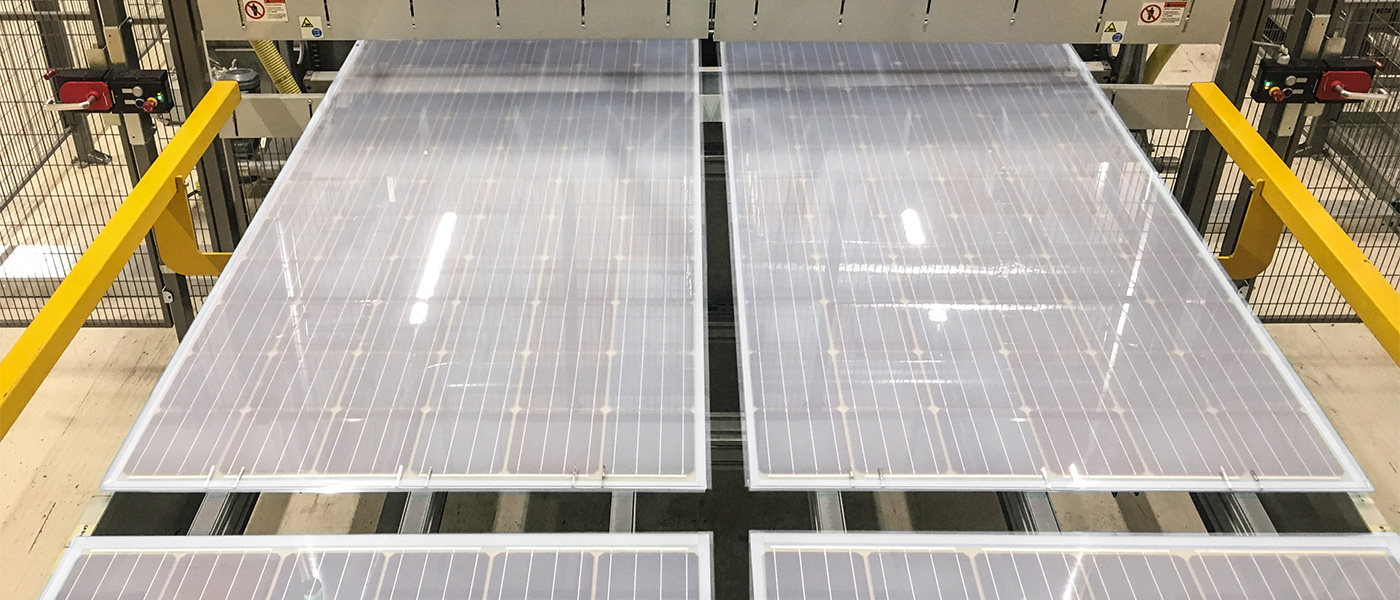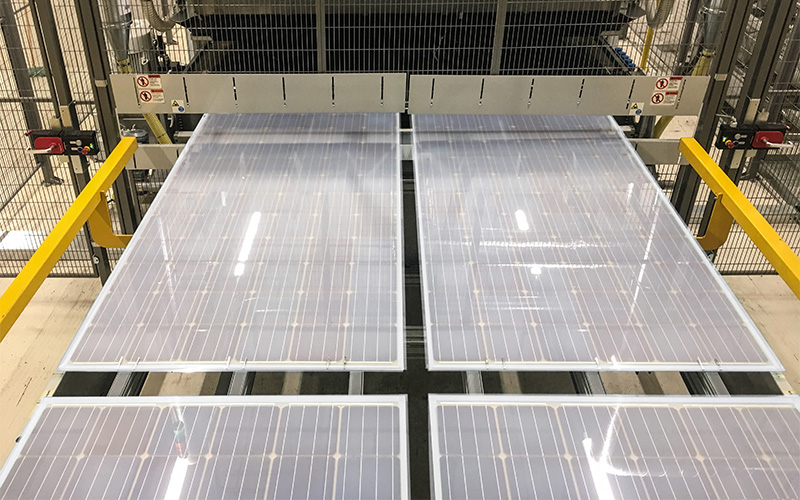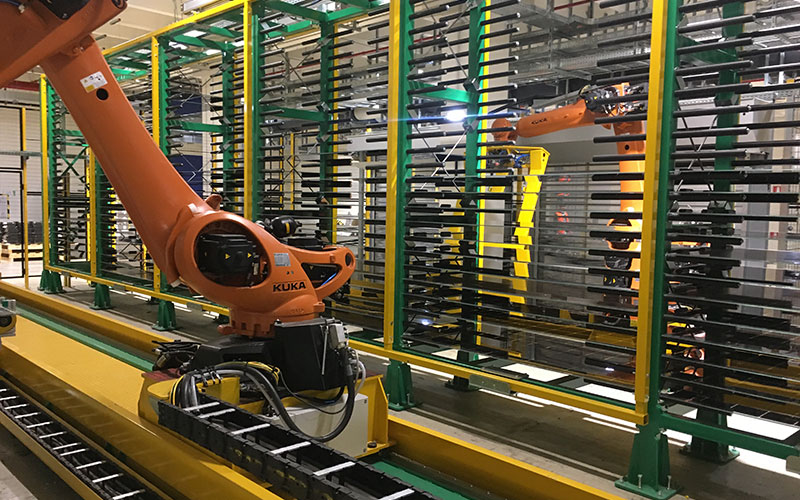
Solar processing lines
Processing lines for assembling mono- or bifacial or thin-film photovoltaic modules. The lines consist in several zones, where Bottero is both supplier and system integrator.
Loading, Laser Marking & Washing Of Front Glass
Glasses composing the module are loaded onto the line thanks to anthropomorphic robots and washed by special washing units.
Eva Laying, Stringers
The first EVA layer is laid on the plate. Top rate stringers weld/glue the 10- 12-cell strings. An anthropomorphic robot takes the string from the stringer, takes it to the electroluminescent quality inspection, and then releases the welded string onto the glass plate. In the following automatic station, strings are connected to one another thanks to ribbons that are fully automatically cut, bent, and welded in the correct position by means of welding robots. Then the second EVA layer is laid and the second glass – in case of a bifacial module – or the Tedlar layer in case of a standard module – is coupled.
Lamination
In the following station, the electroluminescent quality inspection test is carried out before the entry into the lamination system; then the automatic bending of the ribbons and the automatic application of the protective tape on the edges of the modules are performed. Lamination is executed in top production rate lamination furnaces where 4 modules at a time are usually treated. Once the module comes out of the lamination system, the protective tape is removed and trimming is carried out by means of heated blades.
Quality Inspection And Packing
At the end of the line the lateral frame or back rails are automatically applied. J-Box can be applied in manual or automatic mode as well. Quality controls are then performed on- or off-line in order to class the finished module through Sun simulator; High Voltage and Electroluminescence Test are carried out; the software for data storage and for module classification is directly connected to the inspection systems. Furthermore along the line manual inspection stations are available, as well as reworking stations and the storage buffer, in order di assure the correct rate of the different processing phases. At the end of the line an automatic sorting system is available in order to sort the product by power classes; automatic packing by means of robots piles the product on pallets and boxes. Moreover, automatic and semiautomatic options are available for strapping, taping and application of labels on finished pallets.




